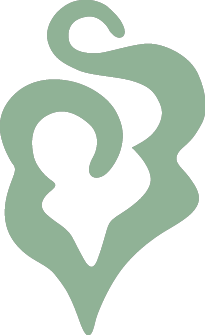
FREQUENTLY ASKED QUESTIONS
Have some questions? You’re not alone. These are the most common questions folks ask about AAIT.
Will participating help on a personal level? In other words, will we apply the work to ourselves and each other? To make it financially viable, it would need to meet personal and professional growth goals.
Absolutely. The course of study is designed with the understanding that you will be practicing AAIT with yourself AND with an accountability partner AND with clients. During our training sessions, there are opportunities to work with me personally in addition to practice time with partners in each training session. Our strong intention is that in the course of our time together, you will become more and more confident in applying what you’ve learned personally and professionally. Also, we will discuss those times when you need the support of another practitioner to create and hold a “container” for your work.
Does this training qualify for CEUs?
AAIT™ trainers comply with guidelines from the National Board of Counselors regarding continuing education for counselors. This comprehensive checklist aligns with the continuing education requirements for most state licensure boards for most professions. Nonetheless, we urge you to check with your state board. Click here to take a look at the CEU guide.
Those who have completed the AAIT™ Foundations workshop facilitated with Melanie McGhee, L.C.S.W. will receive 22.5 CEUs. Practitioners who have completed the Fellowship Training Group with Melanie McGhee should note FTG is 98 hours and we have been approved for 19.5 CEUs and will apply for more hours as participants need.
For the Fellowship Training Group, what’s the constellation of the cohort thus far….other independent practitioners, licensed mental health workers, students, etc. Do most plan to apply the work in practice? How many are in the cohort?
Most are other independent practitioners – some very experienced therapists, some not. Most groups also include coaches and spiritual directors. Our groups have also included other healing arts practitioners such as physical therapists and speech pathologists.
Each cohort is limited to 12 people. The groups typically have a waitlist. Though each cohort has been diverse in background, occupation, age, spiritual interests and sexual orientation, we look forward to our community expanding and becoming even more diverse.
Outside of the training days, how many hours per week of study and practice necessary? The expected time commitment outside of the listed training days and what will that entail….reading, writing, reflection, meditation etc?
Over time, you will be gradually increasing your embodiment home practice time for your personal practice. This generally means between 15 minutes and 30 or more minutes a day — 5 – 7 days / week.
You will be expected to practice what you are learning with your clients. There are guidelines for introducing the work and choosing who you will practice with, etc.
For students in the Fellowship Training Group, you will be expected to meet with your practice partner weekly. Sometimes, accountability partners meet more frequently. Sometimes, folks want to practice or want help or will reach out and work with each other for practice. The group very much becomes a community of learning and support.
There will be some reading – not an overwhelming amount. Your materials are included in the tuition. This includes Creating a Crucible for Transformation, Journey to Oneself, PEAT New Pathways, and Return to Oneness. The more you study these materials the richer your experience will be.
Absolutely. There is a training journey for those who want to continue their path with AAIT.
The training journey typically begins with AAIT Foundations. Though some jump right into applying for the AAIT Fellowship Training Group (FTG).
The next step in becoming a trainer is to serve as my apprentice for a year in the FTG. In this experience, you receive supervision, support and training aimed at preparing you to step into the role as a trainer. This route is open to licensed mental health providers.
Another route to becoming a trainer is to become a trainer of Curate Your State and AAIT Foundations. This route is open to those FTG graduates who are not licensed, mental health providers.
